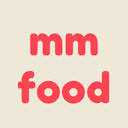Understanding Cross-Contamination in Thai Kitchens: What Every Diner Should Know
Discover how cross-contamination occurs in Thai kitchens and how mm food app helps diners with dietary restrictions enjoy authentic Thai cuisine safely.
MM Food Team

Dine Confidently Anywhere
Get the MM Food app for instant menu translation and allergy detection.
Understanding Cross-Contamination in Thai Kitchens
Eating out is a delight, especially when enjoying authentic Thai cuisine with its rich flavors and aromatic spices. However, for people with dietary restrictions or allergies, dining out safely can be a challenge. One critical issue that often goes unnoticed is cross-contamination in Thai kitchens.
What is Cross-Contamination?
Cross-contamination occurs when harmful allergens or ingredients unintentionally transfer from one food item to another. In kitchens, especially busy restaurant environments, this can happen through shared utensils, cutting boards, frying oil, or even through hands and gloves that aren't changed regularly.
Why Is Cross-Contamination a Concern in Thai Kitchens?
Thai cooking involves a lot of shared ingredients like fish sauce, shrimp paste, peanuts, and soy, which are common allergens. The use of the same woks, knives, and prep surfaces for multiple dishes increases the risk that allergenic ingredients may mix with dishes intended to be free of them.
Common Sources of Cross-Contamination in Thai Food
- Shared Cooking Oil: Many Thai dishes are deep-fried in the same oil, potentially transferring allergens like shellfish or gluten.
- Shared Utensils and Serving Spoons: Using the same ladle for multiple dishes can spread allergens.
- Prep Surfaces: Cutting boards and counters used for meat, seafood, or peanut-containing dishes without proper cleaning can contaminate other foods.
- Sauces and Pastes: Items like fish sauce and shrimp paste are ingredients in many dishes and can inadvertently be added to meals that should avoid them.
How Diners Can Protect Themselves
- Communicate Clearly: Always inform restaurant staff of your dietary restrictions or allergies before ordering.
- Use Technology: Apps like mm food can translate menus to your native language and analyze dishes for dietary safety based on your restrictions.
- Ask About Preparation: Inquire if the restaurant takes steps to prevent cross-contamination.
How mm food Helps Ensure Safe Dining
mm food is a revolutionary app designed to make eating out easy and safe for everyone. Users can input their dietary restrictions—whether from a predefined list or custom requirements—and the app uses AI to analyze and translate menus, highlighting safe options and flagging potential risks, including cross-contamination issues common in Thai kitchens.
Conclusion
Cross-contamination is a vital concern for anyone with food allergies or dietary restrictions, especially in authentic Thai restaurants where shared cooking practices are common. By understanding these risks and leveraging tools like mm food, diners can confidently enjoy Thai cuisine without compromising their safety.
Safe dining is just a tap away—make the most of your Thai culinary adventures with awareness and the right technology!

Dine Confidently Anywhere
Get the MM Food app for instant menu translation and allergy detection.